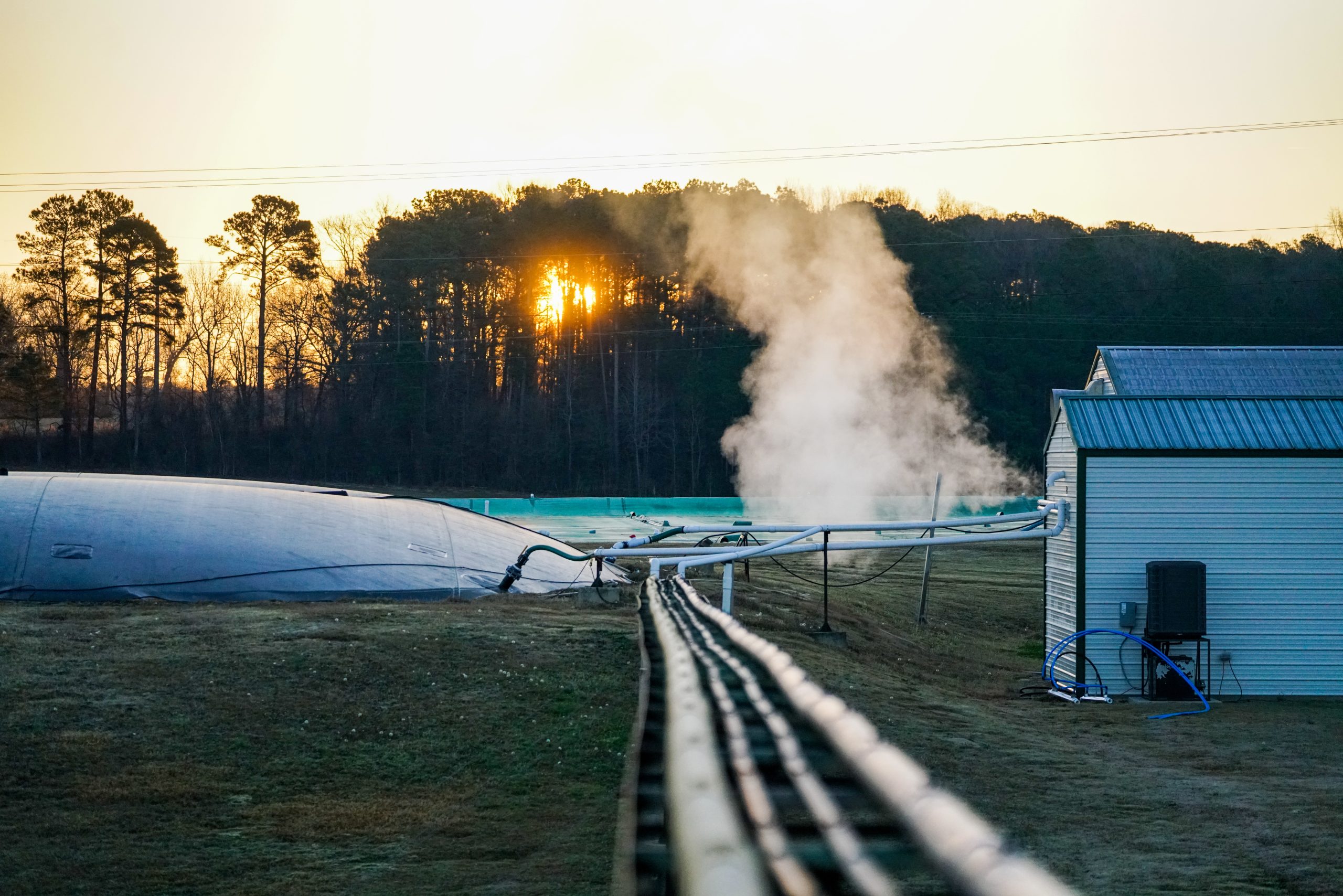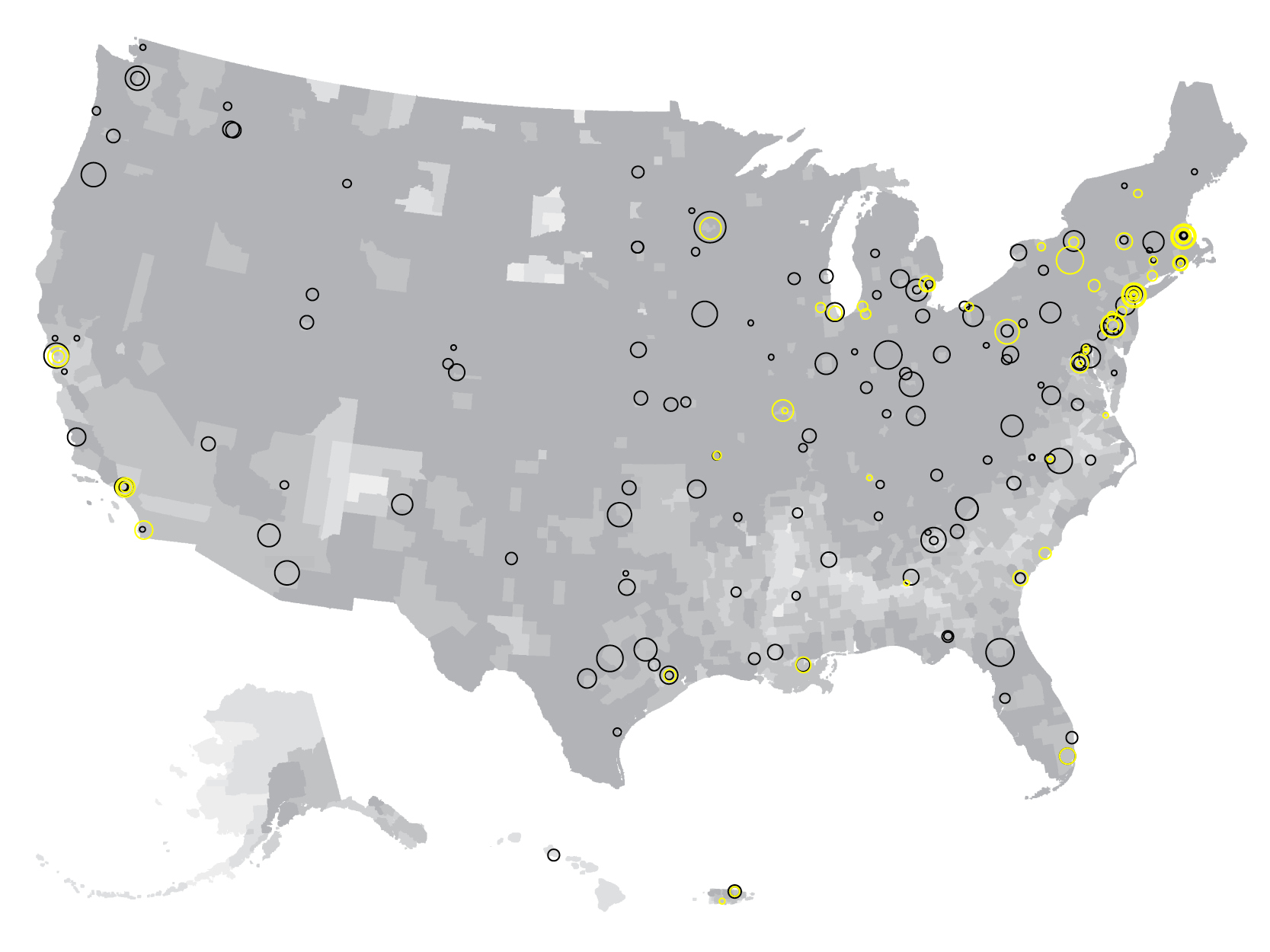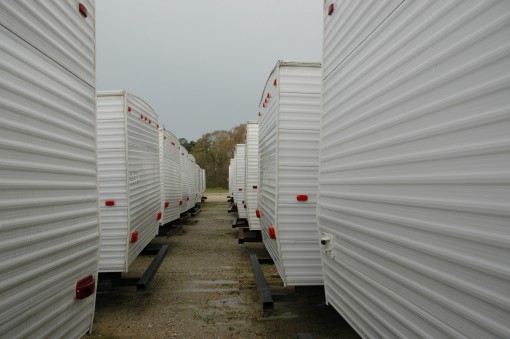Featured
Cameron Oglesby
"This Plan is a Lie"
North Carolina residents, researchers, and farmers say the rapidly growing biogas industry distracts from a massive hog waste problem—and the public health risks that it causes.
Sherri White-Williamson lives about three miles from a pork processing plant in Clinton, North Carolina. On a good day, the air smells fresh, tainted by a minor whiff of rotten egg and sewage. On a bad day, the odor from the plant is so strong, she has to keep her windows closed.
Buell Center
Professional Programs in the Built Environment, 2021
This map indicates the locations and concentrations of the programs included in the database, with special attention given to the proportion of the White population in each location. For more information, see the publication Green Reconstruction: A Curricular Toolkit for the Built Environment. Design by MTWTF
Alicia French
Temporary Homes in Permanent Crisis
In September 2012, a class action settlement awarded $42.6 million to victims of Hurricanes Katrina and Rita who were living in mobile homes with elevated formaldehyde levels meted out as disaster assistance housing by the Federal Emergency Management Agency (FEMA) in partnership with the Department of Housing and Urban Development (HUD). Following the hurricanes, over $50 million was spent on the production of more than fifty thousand travel trailers, with many of the contracts going to privately-owned companies that acted as middlemen for the homes’ procurement.


